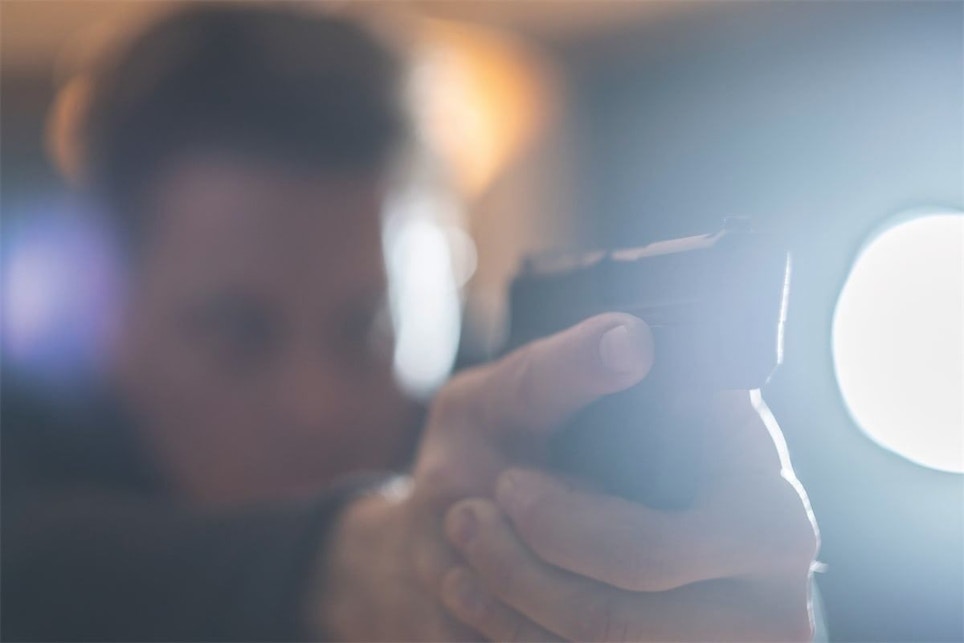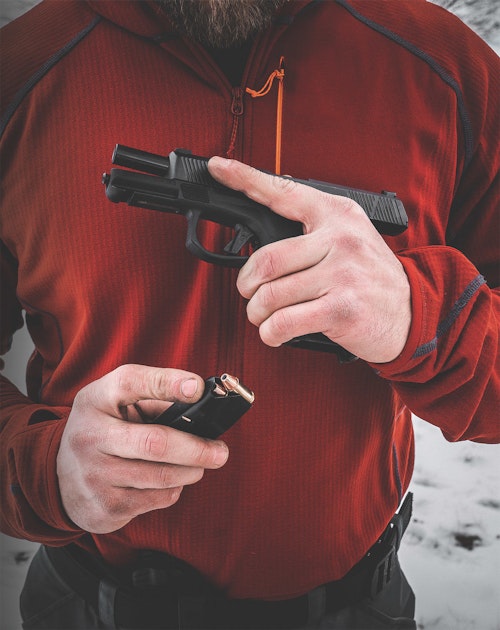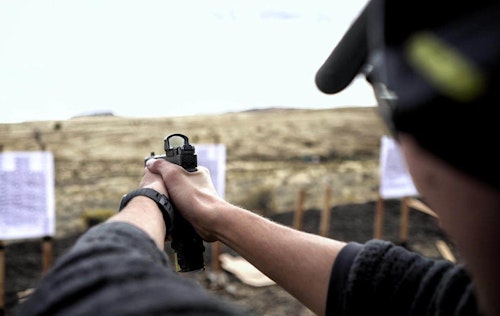Never before has the industry seen such a high number of first-time gun buyers, and many retailers don’t have a strategy for dealing with them in a way that meets their varied needs. Obviously, that can be a problem.
According to the National Shooting Sports Foundation, nearly 14 million Americans bought a firearm for the first time in the past two years — 8.4 million in 2020 and another 5.4 million in 2021. No matter why those people chose to do so, that’s a very significant number of new gun owners that shooting sports retailers can and should look at as potential customers.
Frank Winn, marketing/instructional advisor for DCF Guns, which operates three facilities in Castle Rock and Colorado Springs, Colorado, says newcomers are making up about 15% of their day-to-day traffic, and his company has been intentionally working on ways to better meet their needs. Luckily for our readers, Winn was willing to share some of the things they’ve learned at DCF.
“Two things are critically important in our view,” Winn says. “The first is a simple — even mundane — expedient, but we have re-emphasized the importance of active listening with all our customer-facing employees. All customers want to be heard, but it’s especially important with folks new to our community. Their unfamiliarity with terminology (to say nothing of actual firearms) degrades their ability to express completely and fully what they’re after in a first gun purchase.”
The second thing, Winn says, is always reinforcing safe handling practices. In any circumstance that involves handling a firearm, the DCF staff starts with a three-point check to confirm unloaded condition. If it’s an existing or discernably more experienced customer, they leave it at that and let the interaction take its natural course.
“If it’s someone we don’t know, and especially if they’ve articulated apprehensions or a lower level of knowledge, we’ll talk this through,” Winn says. “‘Here’s an example of something that might suit your needs. Let’s point the muzzle in a safe direction (point to the muzzle) and then check that it’s unloaded by removing the magazine (remove mag if present, which it shouldn’t be), and then open and lock the slide (point to slide lock lever) to check that both breech face (point to it) and chamber (point to it) don’t contain a cartridge.’
“In two sentences, you’ve acknowledged listening to what they’ve said so far, introduced them to the primacy of safety with the single most important rule, expounded seven pieces of terminology in context and with illustration, and all without — we believe — the hint of a putdown. We have also found it to be a low-key but effective priming of the pump for training down the road, and not merely a gear sale today or next week.”
Good Experience
Winn says the number one type of firearms newcomers are looking for are AR-style modern sporting rifles, though good defensive handguns from manufacturers like Glock, Sig and CZ are close behind.
“Carry-class firearms remain in high demand as well,” he says. “With many new gun owners, this last item is both a challenge and opportunity: Many believe that one firearm can meet every need, and that takes some education to overcome.”
Helping first-time gun purchasers decide what they need is a key element in a good customer experience, Winn says. And to him, “need” is the operative word.
“Doing a good job with this is the key to future success for retailers because it drives customer satisfaction and, in turn, repeat and ancillary sales. Over time, we’ve come to look at this more in terms of ‘don’ts.’
“It’s always tempting for sales staff to work to their own perceived strengths. It’s no surprise at all that such knowledge and experience can turn into helpful tips and recommendations for these less experienced customers. But it’s easy to carry ‘recommendations’ way too far. Another way to look at this is don’t talk down to even the newest customer; help them make sound choices but let them be their choices.”
Education is Necessary
Winn says DCF is big on pre-sale training, too. Of course, if you have a range on site that’s much easier to facilitate.
“Use those manufacturer rental gun provisions; this is the shooting community’s version of ‘a picture is worth a thousand words,’” he says. “It protects everybody from buyer’s remorse because that new gun owner got to make real-world comparisons and own their decisions prior to a purchase, which is also why we offer “try before you buy” at DCF.”
Additionally, helping meet the education and training needs of its customers — and especially new gun owners — is a priority for Winn and the DCF staff. They’ve learned a few helpful things along those lines, too.
“It’s an unpleasant, unhelpful truth that non-shooters get virtually all of their ‘knowledge’ about firearms from TV, movies and YouTube,” Winn says. “This means that a certain amount of re-education will be necessary. More than any single thing, this means clear, consistent articulation of which courses teach what skills, and an unmistakable path of progression.”
DCF uses a numbering system, much as colleges do, to determine placement of students in courses. If there’s a question, say, about working from the holster, they will also do individual checks on readiness for a particular level of class.
“In practical terms, new or newish shooters will go into 100 or 101 classes to get rudiments down pat,” he says. “Less shooting by round count, but lots of practice with safety and marksmanship fundamentals. 201 and 301 classes go considerably further: CCW/CHP training requirements, holster work, competition prep and tactical shooting skills.
“We also have a small cadre of very experienced instructors who support private curriculums tailored to individual or small group needs.”
While Winn has given lots of advice on what retailers and ranges should be doing to cater to first-time gun owners, he also has some advice on what not to do. And among that advice he believes one point is vitally important.
“Never assume,” he says. “It’s not only unsafe but condescending. The firearms community has a lot of image repair to conduct with the non-shooting public (out of which newbies are transitioning). The better we do this job, the easier it will be to get more folks to come out and see what it’s all about. If we’re really conscientious, the media will have a much harder time selling the negative stereotypes that have worked so well for decades.
“Also, don’t bad-mouth your competition. Nobody wins here, and especially not the larger Second Amendment community. Especially for new shooters, we need to elevate the public perception of shooters and shooting.”
Teaching Fundamentals
One thing many in the industry are working toward is making sure that these 14 million-plus first-time gun owners don’t just go home, stash their firearm in the top of a closet and forget about it. For them to be responsible gun owners, they need to learn how to safely handle that gun and how to use it correctly. Winn has a few thoughts on that, also.
“Without being heavy-handed, we try to make it clear that learning to use firearms well and properly can be fun and challenging while remaining safe,” he says. “This leads in one or two directions — classes and competition — and it’s easy to see how one can support or forward the other. Steel Challenge-type shooting is a great example. There’s a low equipment burden (a case for your firearm and three loading devices), and an economical round count. Range safety is simplified compared to most other types of competition, and the shooting ‘solution’ is obvious and satisfying: Make the target go ‘ding.’ It stresses fundamentals (sight picture, trigger press) and reveals shortcomings in a fun, well-paced event.
“Want to get better and enjoy it more? We have classes X, Y and Z that will help you master those skills. And gear A, B and C that will help you catch — and maybe surpass — those better shooters you saw.”
Building a Base
Another important aspect of catering to first-time gun owners is building return customers. After all, return customers are the backbone of many businesses, and shooting retailers are no different.
“It’s crucially important not to focus too much on today’s sale,” Winn says. “Of course, we all have to keep the lights on, but any business wants to grow as well. That’s just good sense. But allowing short-term imperatives to apply too much make-the-sale pressure to every interaction is very harmful in the long run. A properly trained sales team will, therefore, have a value-oriented strategy that builds durable customer relationships.
“We’ve already touched on some of aspects of this: Really listen to the customer, especially in those early interactions — ask sincere questions, avoid the temptation to steer recommendations with your own tastes or to a flavor of the month, don’t talk down to anybody, ever, no matter how experienced or expert you happen to be.”
One important aspect that many industry observers have noted about the 14 million-plus new gun owners is how important that large number of people could be in protecting the Second Amendment right to keep and bear arms from continuous attacks by the gun-ban crowd. There’s political power in numbers, and Winn believes bringing first-time gun owners into the Second Amendment advocacy fold is very important.
“There’s very little choice but to join one of the gun rights organizations, of which the National Rifle Association is the biggest and — like it or not — probably the most effective,” he says. “I’m not sure we know a single gun owner who is happy with them all the time, but the only reason we still have substantive firearms ownership rights — and especially of constitutionally relevant types like the AR-15 — in this country is because of them.
“Many new gun owners are not exactly on the political right, and they have a heinously false impression of the NRA that has been promulgated by the media in the last 35 years. They need to be gently educated on this topic, too, and come to understand why the Second Amendment is no anachronism, rather the cornerstone of the Bill of Rights.”









